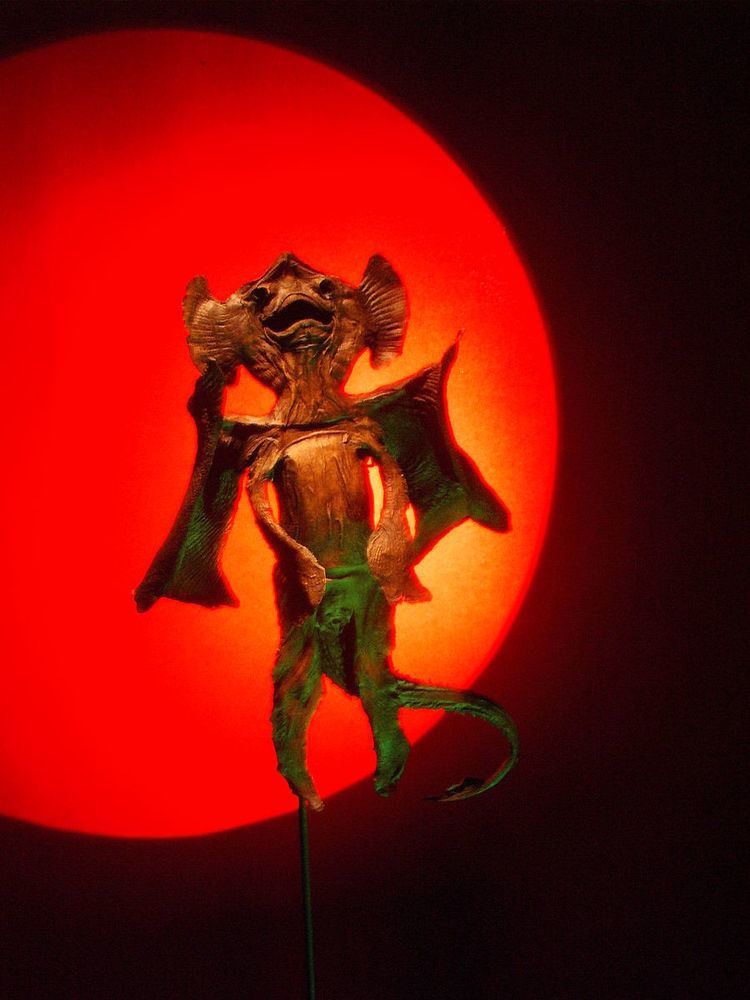 | ||
A Jenny Haniver is the carcass of a ray or a skate that has been modified and subsequently dried, resulting in a grotesque preserved specimen.
Contents
Name
One suggestion for the origin of the term was the French phrase jeune d'Anvers ('young [person] of Antwerp'). British sailors "cockneyed" this description into the personal name "Jenny Hanvers". They are also widely known as "Jenny Haviers".
History
Jenny Hanivers have been created to look like devils, angels and dragons. Some writers have suggested the sea monk may have been a Jenny Haniver.
The earliest known picture of Jenny Haniver appeared in Konrad Gesner's Historia Animalium vol. IV in 1558. Gesner warned that these were merely disfigured rays and should not be believed to be miniature dragons or monsters, which was a popular misconception at the time.
The most common misconception was that Jenny Hanivers were Basilisks. As Basilisks were creatures that killed with merely a glance, no one could claim to know what one looks like. For this reason it was easy to pass off Jenny Hanivers as these creatures which were still widely feared in the 16th century.
In Veracruz, Jenny Hanivers are considered to have magical powers and are employed by curanderos in their rituals. This tradition may have originated in Japan, where fake ningyo similar to the Fiji mermaid that were produced by using rogue taxidermy are kept in temples.
